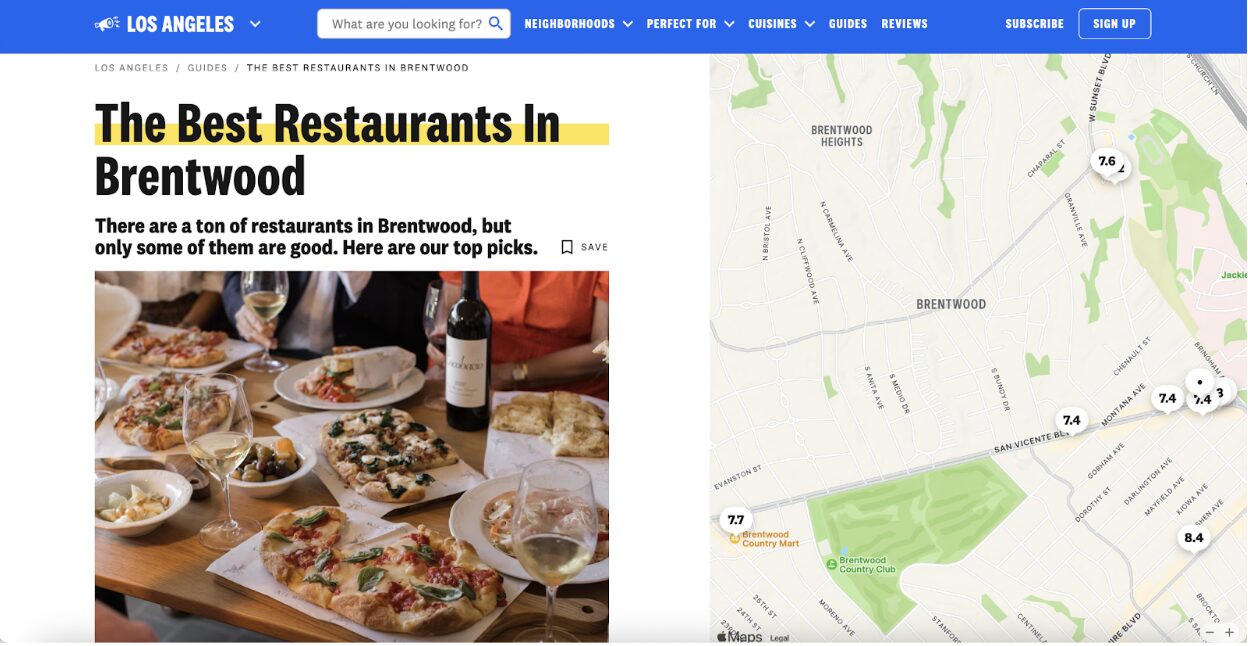Your audience growth playbook for 2025
Last updated: September 26, 2025

In or State of Audience Report, media professionals in 2025 and 2024 expressed strong interest in growing their audience size. (In 2024, nearly 70% of respondents naming it as a top three priority. In 2025, 62% of respondents ranked “growing audience size and reach” as one of their top two priorities.) But as tried-and-true growth channels like social and search lose steam, how can you grow your audience? More importantly, how can you attract the right audience — people that will stick with you for the long haul?
There’s no single answer. We work with hundreds of media companies, from small business magazines to large consumer and business brands, each with their own different topics, verticals and audience needs. And what works for one audience might not resonate with another.
But there are some fundamentals and best practices you can follow. In this guide, we’ll focus on two different kinds of growth: increasing the overall number of audience members and increasing paid subscribers. Read on for more advice on both fronts:
Invest in first-party data
Once you’ve got a good idea of what your core audience does, what they care about, and what they need from you, you’re in a better position to find and attract other people like them. So if you need to level up your growth efforts, start by collecting more first-party data about your audience.
Here’s where to start:
Consider implementing a registration wall to learn more about your website audience. Worried you’ll lose too much website traffic if you gate your content? Target your reg walls at custom audiences (i.e., leave your website fully open to first-time website visitors, but put up a reg wall on their third visit). Or experiment with the number of “free” visits someone gets before they face a reg wall.
For instance, Virginia Business allowed their website visitors anywhere from one to four “free’ articles before presenting them with a reg wall before settling on two.
Consider using a customer data platform (CDP) or similar tools to unify first-party data from all of your channels. Getting first-party data is only step one. Once you’ve got that data, you need an automated, reliable way to get all of that data in one place. Otherwise, you won’t have a single view of each person in your audience and you won’t be able to personalize your content and offers to their needs.
A CDP will do that for you, giving you a complete, current view of everyone in your audience. That makes it easier to target the right content to the right audience members — and turn first-time visitors into long-term subscribers.
(For best results, consider using a CDP that connects to other tools in your audience stack, like your marketing automation or subscription systems.)
Collect the most predictive, actionable data points. Collecting data without an underlying plan doesn’t just create extra work for your team. It increases your technical costs and turns audiences away (it’s almost 2025, nobody’s filling out 10-question forms anymore).
And it violates the Global Data Privacy Regulation’s (GDPR) requirement that businesses only collect data that’s “adequate, relevant and limited to what is necessary in relation to the purposes for which they are processed.”
So what data points should you collect? Prioritize intent signals — data points that tend to predict an eventual subscription. (Ask your leadership, subscription and sales teams for these data points if you’re not sure.)
For instance, maybe your data shows that people who attend a webinar are 3x more likely to become paid subscribers than other audience members. In that case, you might add some more qualifying questions to your webinar sign-up form, like industry or vertical, so you can better tailor promotions to that promising audience.
Or you might add poll questions to the webinar itself to get a better idea of this audience’s needs.
Identify and drive lifetime value from the right niches
Media business forces are shifting the advantage away from mass publishers — like Buzzfeed — toward niche publishers that build passionate audiences around more specific topics.
But what makes a good niche? The best ones are specific enough to attract passionate audiences, but broad enough to turn a profit and advertise against.
How can you strike this balance? We got some tips from Smooth Media:
Is it specific? A good niche allows you to go deep in one particular area. This prevents you from trying to be all things to all people.
Is there white space? In other words, do you think you can cover this niche better than anyone else? As Kinsey Grant said in the same Smooth Media article, “Because the best focus areas for knowledge creators are those where they can create a significant impact…”
“They can be an early mover. They can establish a new perspective that’s wholly original. They can offer a voice that’s been absent. They can capture an audience hungry for knowledge that, so far, hasn’t existed or been accessible to them.”
How’s the momentum? Basically, a good niche has some room for growth. (i.e., a former Harvard ethics professor in the tech space who’s covering the ethics of AI will have more momentum than someone covering the paper industry.)
As Grant said, “A good niche is contemporary; a great one is forward-thinking. It’s growing, not shrinking. It’s—dare we say—disruptive. There will be more people interested in this concept or industry in 10 years than there are today. That momentum is a prerequisite for a successful knowledge creator business.”
Can you drive enough lifetime value from your audience in this niche? A final point from us: Niching down, by definition, caps your total addressable market. To survive, you need to be able to get more from each person in that market, whether that’s more engagement, impressions, or subscription dollars..
So once you identify a potential niche, find new ways to drive revenue from that audience outside of your print content. Maybe you create more tactical content, templates and guides for paid subscribers.
If you’re providing industry analysis, maybe you provide consulting services to top subscribers. Maybe you create paid community boards, networking sessions and/or access to invite-only networking events. Build products around your unique knowledge and you’ll be able to grow and sustain an audience.
Adapt your content delivery to meet your audience’s content consumption needs
Content needs to fit into your audience’s lives, not the other way around. Since they let your audience multi-task, original podcast series and/or branded podcasts can help expand your audience, especially among mobile users and commuters.
Promote it correctly and it’ll give you a whole new audience of people that would’ve already subscribed if you’d had an audio option.
For instance, Isaac Saul started a podcast complement to his Tangle newsletter solely to meet audience demand. As he recently told Inbox Collective, “I was getting a ton of emails from people that were like, ‘Dude, I love your newsletter. I don’t have time to read it every day. If I could listen to this while I was doing the dishes, it would make a huge difference, and I would listen to it every day.’”
Since then, the podcast has blossomed into its own unique acquisition channel. “Over time, it’s become more sophisticated. I have co-hosts who read some of the newsletter. We interview people on the podcast, so we have unique content that exists in the podcast but doesn’t necessarily exist in the newsletter,” Saul added.
Can’t commit to a full audio strategy? Create audio versions of your articles, either using a live narrator or an AI voice generator. Then embed the recording onto the page — or promote it separately on your social media or in newsletters. That way, you can give readers an audio option without creating a brand new podcast strategy.
Create interactive and immersive content
Invest in interactive storytelling, data-driven visualizations, quizzes, and other formats that engage audiences actively. Offering unique content experiences differentiates your brand and encourages more frequent visits. Here’s how to get started:
Offer additional value or fill data gaps with interactive polls, surveys and quizzes. Gated content gives you more information about your audience, but it also creates additional friction without providing additional value to the user. But through more interactive content formats, you can educate and provide value to your audience while also driving first-party data. Watch a video about how Omeda clients are using personalization and interactive content to grow their audiences.
Create data visualizations and illustrate trends/relationships using Flourish or similar tools. Data visualizations let you communicate complex ideas more quickly while also engaging multiple senses. Our anecdotal evidence shows that alone can improve engagement. For instance, we use Flourish to create interactive graphs and searchable tables for our quarterly email engagement report.
One table lists email performance for all five of our deployment types, but readers can search for individual deployment type performance in the search bar along the top of the screen.
Complement your print content with additional maps, ratings or other add-ons. The best interactive content provides an additional utility to the reader. For instance: The Infatuation, a popular local nightlife review site, creates interactive neighborhood guides featuring the best restaurants and bars in that area.

All of the restaurants are arranged on a neighborhood map, with the Infatuation’s rating for each place overlaid on its pin. The reader gets everything they need to plan their night out in one place, without needing to cross-reference Yelp or Google Maps for more information. For any urban 20-something who’s undecided on dinner plans, it’s a lifesaver.
Struggling with siloed subscriber data, complicated workflows, and declining audience engagement? What if you could unify your subscriber data and use it to create better subscriber experiences with less effort? Learn how Omeda’s integrated Audience Management Platform helps teams like yours use their subscriber data to strengthen their media businesses.
Subscribe to our newsletter
Sign up to get our latest articles sent directly to your inbox.